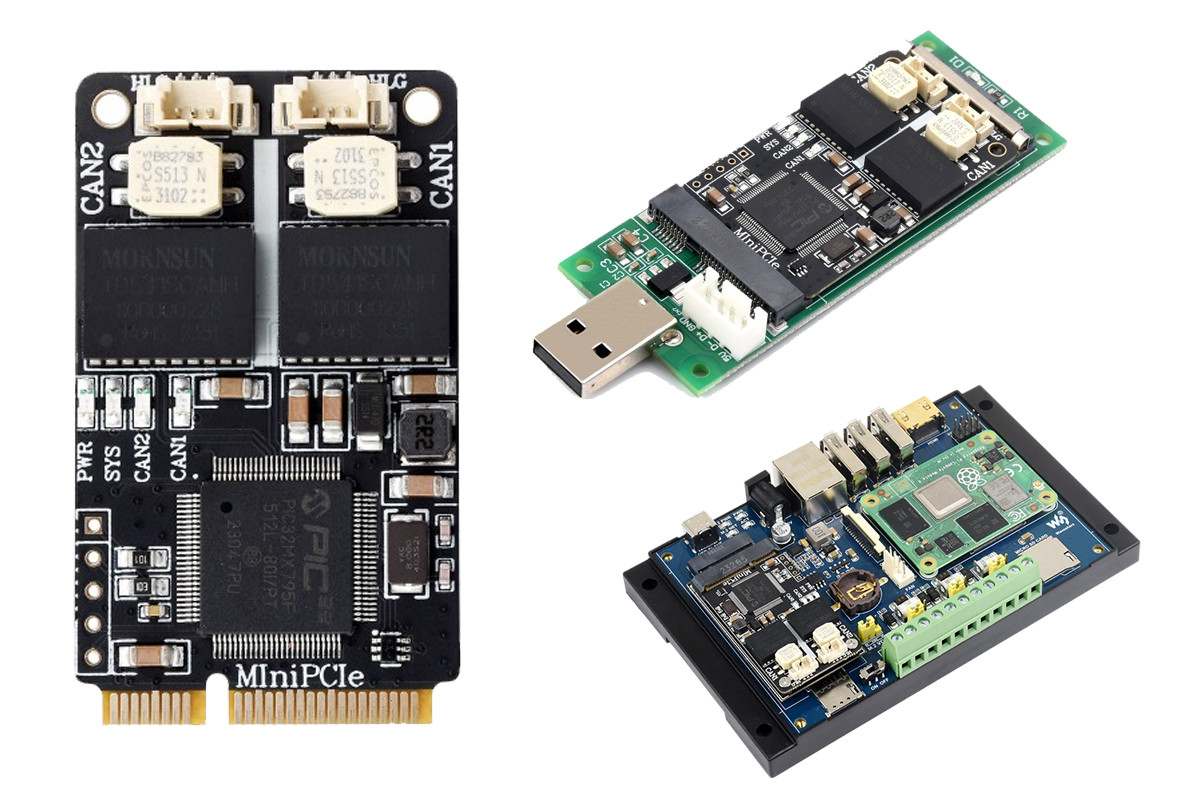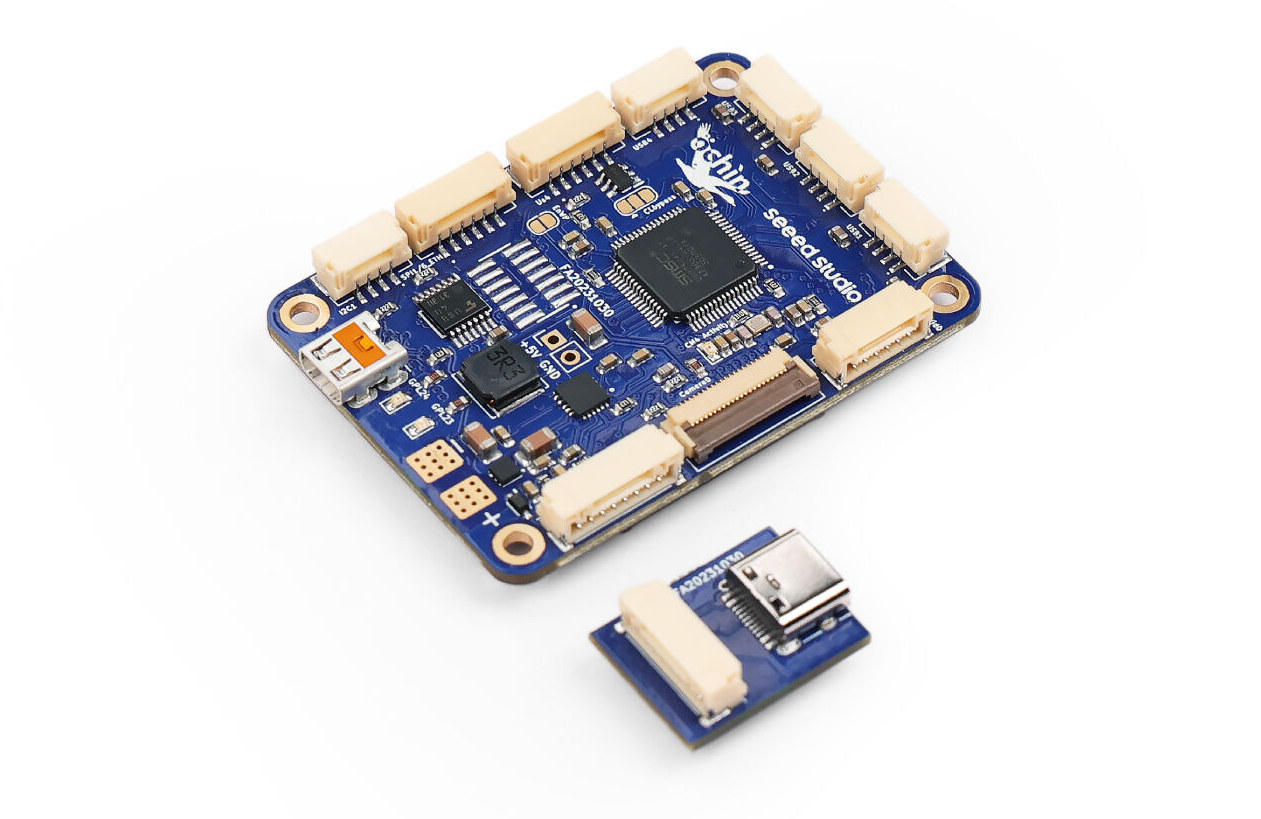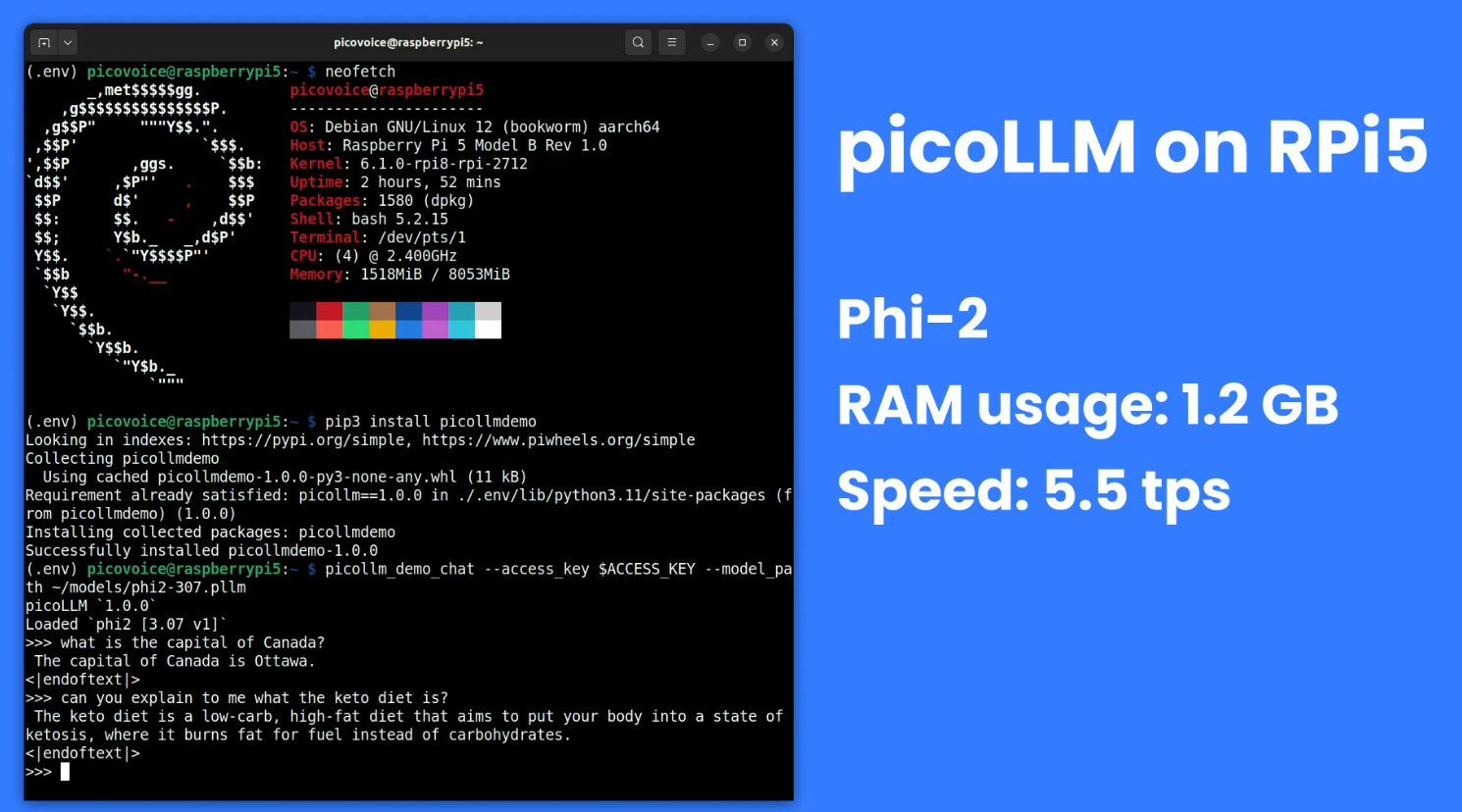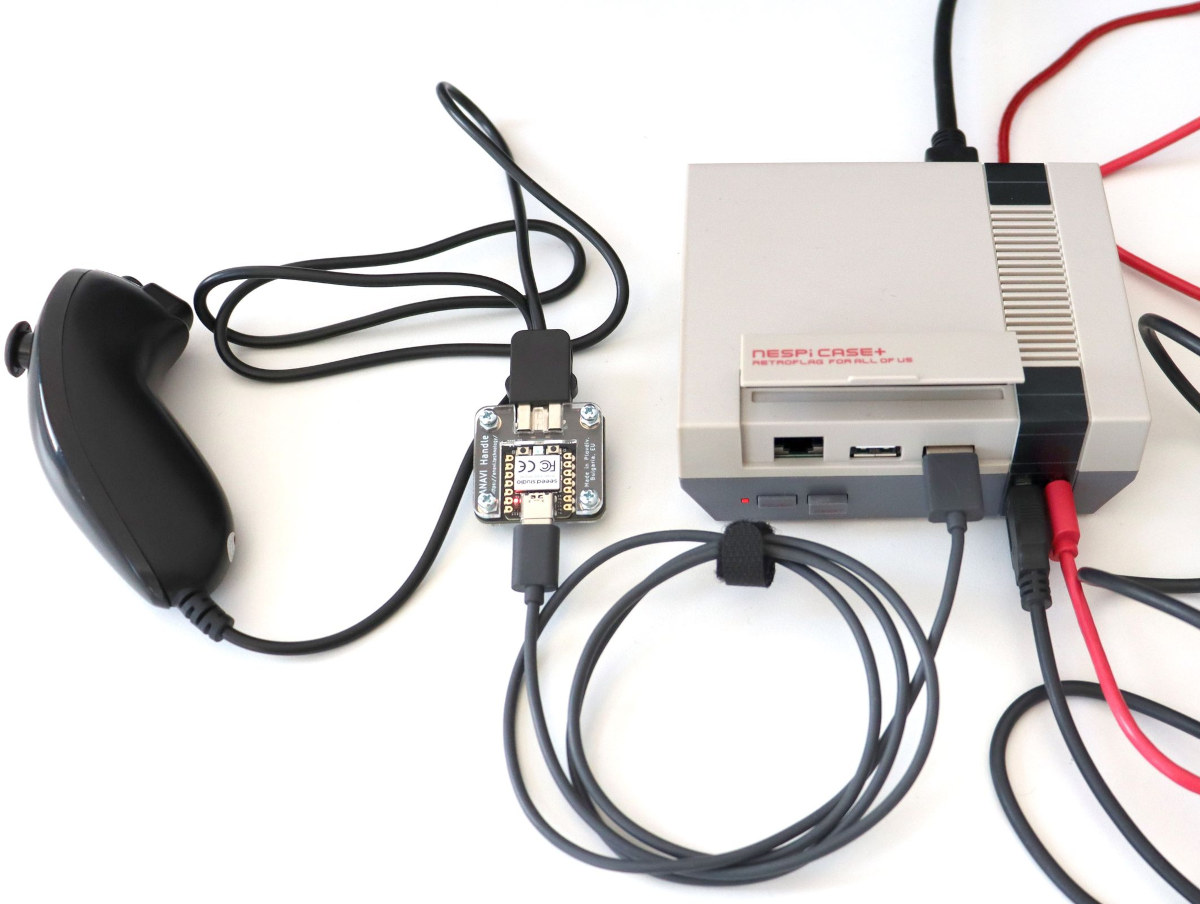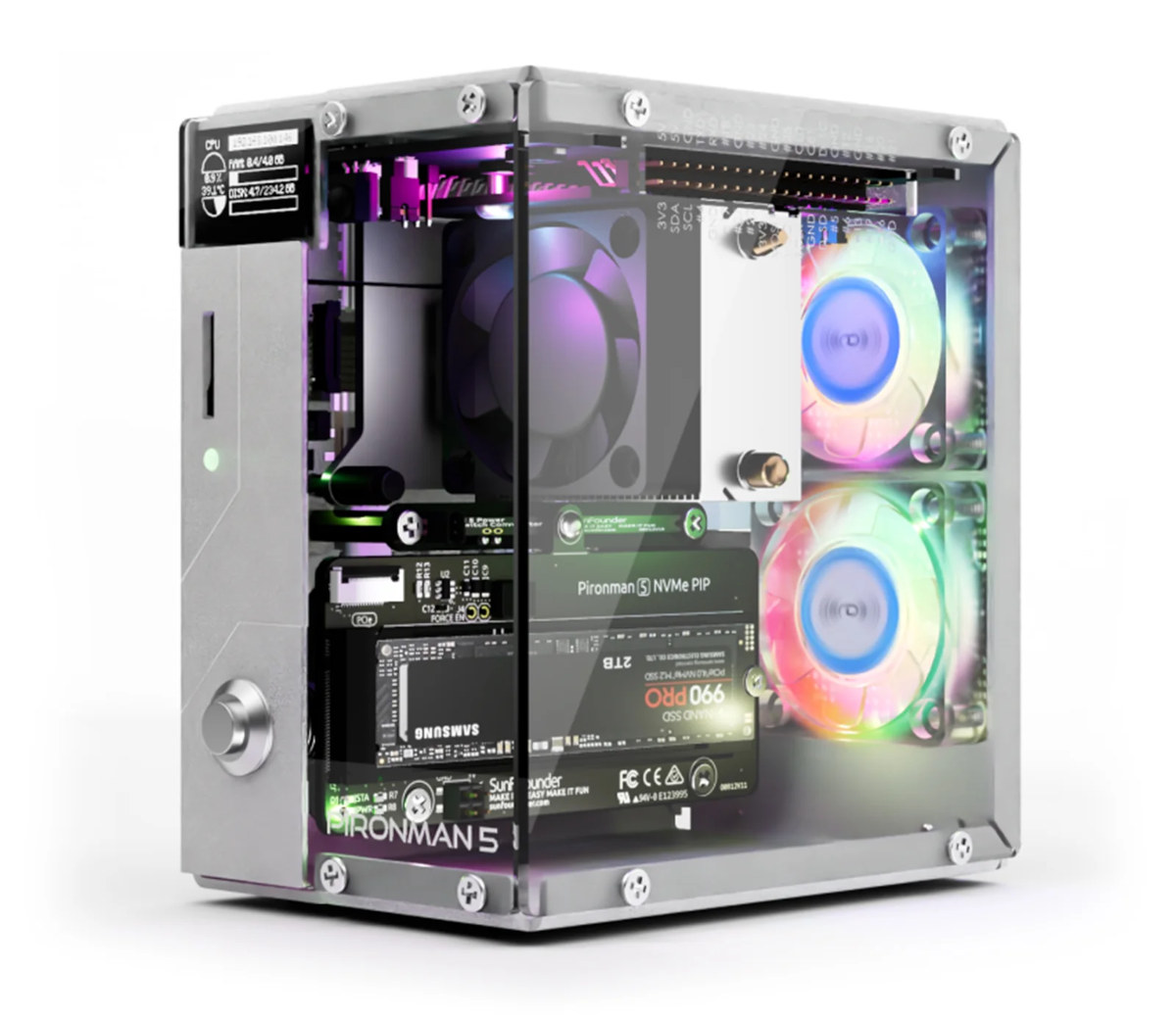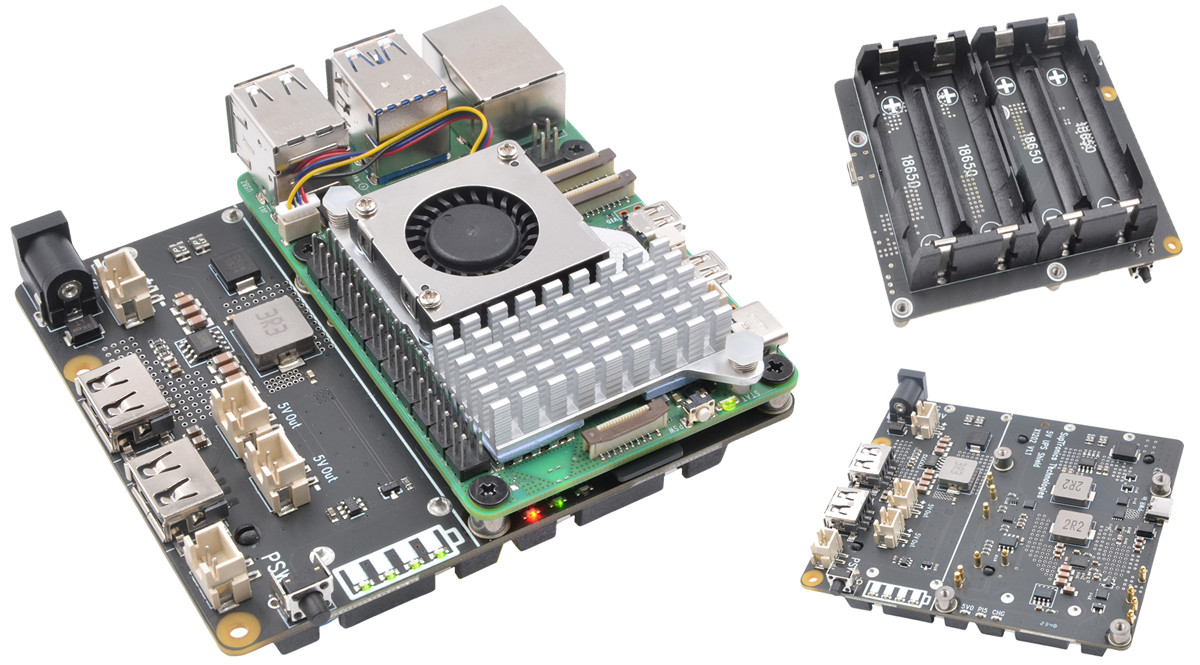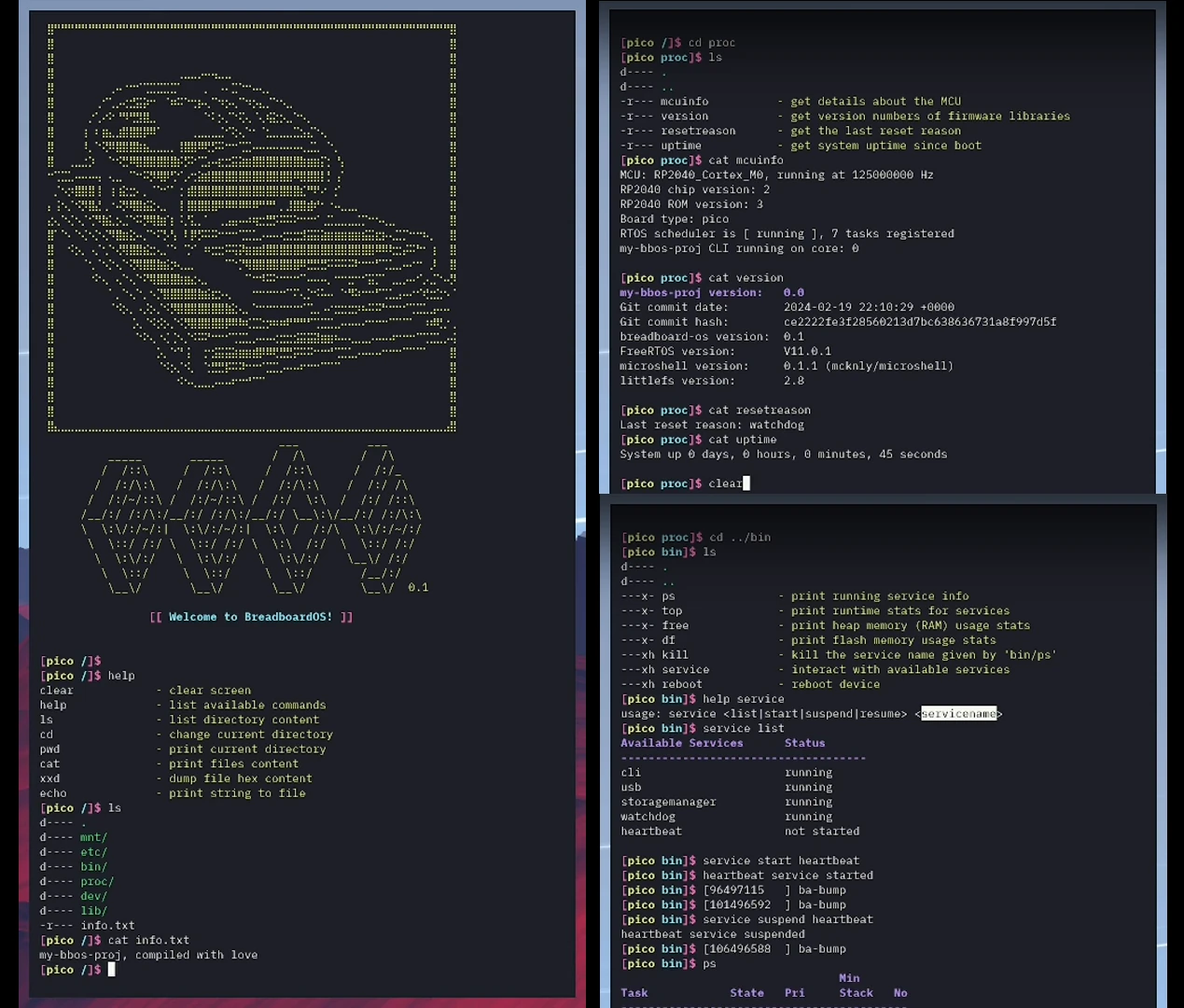There’s been some notable software news for single board computers (SBCs) in the last few weeks with the release of Armbian 24.5.1 Havier with a focus on stability and UX improvement, the release of DietPi 9.4 lightweight Debian distritions for SBCs, and Otii server, the software for Qoitech Arc power supply, meter, and DAQ, has been finally released for the Raspberry Pi 4/5. Armbian 24.5.1 Havier Armbian announced 24.5.1 Havier on May 25 with bug fixes and improvements as a point release, but also some new boards. Here are some of the highlights. New boards Orange Pi 5 Pro FriendlyElec CM3588 NAS board Radxa ROCK 5 ITX Radxa Zero 3E/3W Avaota A1 SBC SK-AM68 board tqma8mpxl board CSC Hinlink H6xk boards RK3588-based Cool Pi CM5 EVB Improve Khadas support Resolve Rockchip patch maintenance nightmare Add functionality to freeze git resources Improve support for Radxa Rock S 0 and test USB […]
Waveshare 2-CH CAN MiniPCIe – An isolated CAN Bus mini PCIe card for Raspberry Pi CM4 and hosts with USB
Waveshare 2-CH CAN MiniPCIe is a compact, CAN bus card featuring dual independent CAN channels with a wide baud rate range (10Kbps to 1Mbps). Unlike the esd electronics CAN-PCIeMiniHS/402, this Waveshare card is isolated, supports CAN2.0A/B protocols, and offers easy integration with laptops, industrial computers, and SBCs like Raspberry Pi via Mini PCIe or USB through an adapter. Additionally, the card supports Windows and Linux operating systems, making it ideal for applications like industrial automation and automotive diagnostics and development. Previously we have covered many unique Waveshare products including the Waveshare 1.69-inch IPS touch LCD, ESP32-C6-Pico and ESP32-C6-Pico-M development boards, the Waveshare UGV Rover, and many others feel free to check those out if you are interested in different Waveshare products. Waveshare 2-CH CAN MiniPCIe CAN bus card specifications CAN Bus CAN channel – Dual-channel: CAN1 and CAN2 (independent and isolated) Connector – CAN bus screw terminal (standard 1.25mm pitch) […]
Ochin V2 tiny Raspberry Pi CM4 robotics carrier board gets micro HDMI port, Fast Ethernet support
Ochin V2 is an update to the tiny Ochin Raspberry Pi CM4 carrier board for robotics applications and drones that adds a micro HDMI port, support for Fast Ethernet through pads or a GHS connector (no RJ45 connector), two user LEDs, and a few other changes. The form factor remains the same at just 55 x 40 x 4.7mm, or about the size of a Raspberry Pi Compute Module 4, which in combination with a range of USB, UART, I2C, and SPI interfaces, makes it an ideal candidate for space-constrained applications such as robotics system or UAVs. Ochin V2 specifications (differences against Ochin v1 shown in bold or strikethrough): Supported modules – Raspberry Pi CM4 with Broadcom BCM2711 quad-core Cortex-A72 processor, up to 8GB RAM, up to 32GB eMMC flash (the CM4 Lite is not supported since there’s no microSD card on the board), 4Kp60 H.265 decode, 1080p30 H.264 encode, […]
picoLLM is a cross-platform, on-device LLM inference engine
Large Language Models (LLMs) can run locally on mini PCs or single board computers like the Raspberry Pi 5 but with limited performance due to high memory usage and bandwidth requirements. That’s why Picovoice has developed the picoLLM Inference Engine cross-platform SDK optimized for running compressed large language models on systems running Linux (x86_64), macOS (arm64, x86_64), and Windows (x86_64), Raspberry Pi OS on Pi 5 and 4, Android and iOS mobile operating systems, as well as web browsers such as Chrome, Safari, Edge, and Firefox. Alireza Kenarsari, Picovoice CEO, told CNX Software that “picoLLM is a joint effort of Picovoice deep learning researchers who developed the X-bit quantization algorithm and engineers who built the cross-platform LLM inference engine to bring any LLM to any device and control back to enterprises”. The company says picoLLM delivers better accuracy than GPTQ when using Llama-3.8B MMLU (Massive Multitask Language Understanding) as a […]
Use your Nintendo Wii Nunchuk as a USB controller with ANAVI Handle open-source hardware adapter (Crowdfunding)
Leon ANAVI has launched another open-source hardware project with the ANAVI Handle that transforms the Nintendo Wii Nunchuck into a USB controller meaning the Wii controller can now be used with any common hardware such as computers, laptops, single board computers, retro-gaming consoles, and so on. The ANAVI Handle is built around the Seeed Studio XIAO RP2040 module based on Raspberry Pi RP2040 microcontroller and converts the Wii Nunchuck with a custom port carrying I2C signals into a standard USB HID device that works without any extra drivers. ANAVI Handle specifications: MCU module – XIAO RP2040 MCU – Raspberry Pi RP2040 dual-core Cortex-M0 processor at 133MHz and 264kB RAM. Storage – 2MB SPI flash USB – 1x USB type C port for power and data Misc – Reset button, boot button, some LEDs PCB Nunchuck connector with I2C signal Dimensions – 35.0 x 33.3 mm OSHWA certification – BG000134 ANAVI […]
Pironman 5 is a fancy tower PC case for the Raspberry Pi 5 with NVMe M.2 SSD, oversized fans, RGB LEDs
SunFounder Pironman 5 is an enclosure for the Raspberry Pi 5 SBC that looks like a small Tower PC equipped with two RGB LED fans and a tower cooler with a PWM fan for cooling, and support for an NVMe SSD drive through the company’s Pironman 5 NVMe PiP HAT+ expansion board. The case also includes a small OLED information display, a power button for safe shutdown, two full-size HDMI ports, a spring-loaded microSD card socket for easy insertion and removal, an IR receiver for media center applications, and externally accessible 40-pin GPIO header so users can still play with GPIO while the Raspberry Pi 5 is inside the case. Pironman 5 key features and specifications: Designed for the Raspberry Pi 5 SBC (a board like Radxa Rock 5C could be installed instead, but software for OLED display, RGB LEDs, fan control, etc… might be an issue) Storage Pironman 5 […]
SupTronics Raspberry Pi 5 UPS HAT X1202 V1.1 takes four 18650 batteries delivering up to 25W
For the tinkerers and DIYers out there, keeping a Raspberry Pi project running reliably, day in and day out, especially when the power is out is crucial, and previously Raspberry Pi UPS solutions have been available for years with products like Pascal Herczog’s Red Reactor, PiJuice Zero, PiVoyager, or LiFePO4wered/Pi+ and many others. But the problem with all these old solutions is that they cannot handle the power requirements of the new Raspberry Pi 5, especially when the PCIe is active and other peripherals are attached to it. This is where the SupTronics Raspberry Pi 5 UPS HAT comes in. This new SupTronics X1202 V1.1 UPS Shield includes four 18650 batteries and can deliver 5V with a higher current output of up to 5A, or 25W of power. Additionally, it includes automatic power switching and battery level detection via I2C, an integrated fuel-gauge system, battery protection mechanisms, and fast charging support, making […]
BreadboardOS firmware for the Raspberry Pi RP2040 features a Linux-like terminal
Cavin McKinley’s BreadboardOS is an open-source firmware platform for the Raspberry Pi RP2040 MCU (for now) built around FreeRTOS and with a feature-packed CLI that reminds me of the Linux terminal.
The terminal implementation is based on a fork of the microshell project with some additional customization. It is organized into POSIX-style folders/files providing a familiar user interface for interacting with the hardware on the MCU.
BreadboardOS running on Raspberry Pi Pico board
BreadboardOS highlights:
FreeRTOS-based
Tools for checking system resources such as ps, top, free, and df commands
Interaction with chip I/O and serial buses from the terminal using commands such as cat and echo, for example, you can print the list of GPIOs with:



